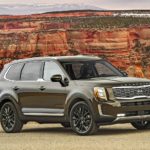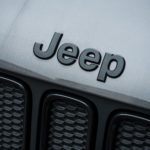Tesla is the world’s largest EV manufacturer, renowned for popular electric car models like the Model S. It also owns the Tesla Supercharger network, one of the biggest public EV charging networks in the United States and Canada. The Supercharger network also operates in many other countries with Tesla EVs.
Much like Apple products use the company’s proprietary connectors, Tesla EVs use the Tesla charging system to hook up to a Supercharger station. In 2022, Tesla renamed its charging connector system the North American Charging Standard (NACS). But what’s the reasoning behind the rebranding of the Tesla charging standard? And what does it mean for EV owners in the future?
What Is the North American Charging Standard?
NACS is Tesla’s proprietary EV charging connector system. It debuted as the Tesla charging standard in the groundbreaking 2012 Tesla Model S. The company used the charging connector system in all subsequent EV models, including the Model X and Model Y crossover SUVs.
The renamed Tesla charging standard includes safety mechanisms. For example, it eliminates as much heat as possible during the charging process to prevent overheating.
NACS supports both AC charging and DC fast charging. It is currently undergoing standardization under the designation SAE J3400.
According to Tesla, NACS is the prevalent charging standard in North America. Vehicles with a Tesla charging standard/NACS connector outnumber those with the Combined Charging System (CCS) two to one. Furthermore, the Supercharger network has 60% more NACS posts than the combined posts of other charging networks that use CCS.
How Does NACS Charging Work?
The NACS connector has five pins. It uses two primary pins –the DC+/L1 and DC+/L2 pins– for both AC charging and DC fast charging. The three other pins perform different roles.
The Ground (G) pin eliminates excess charge by dumping it into the road surface. As its name indicates, it connects the EV to the ground. The other two secondary pins compare their signals with the G pin and measure how isolated the vehicle’s electrical systems are.
Next is the Control Pilot (CP) pin. It provides a digital communication line between the EV’s computer and the charging system. In line with international standards of EV conductive charging systems, the CP pin sends signals to show the charging state and current. In DC charging mode, the CP line also handles power line communication.
Finally, there’s the Proximity Pilot (PP) pin. It carries a signal that checks the EV connector’s current status. The connector unlocks when you press the control button on the plug. Then the proximity pilot circuit switch opens, cutting the power supply.
Depending on the configuration, the NACS system delivers different voltage and amperage. In AC charging mode, it operates at 277 volts and sends a maximum of 80 amps. In DC fast charging mode, NACS goes up to 500 volts and 500 amps.
Residential charging stations might configure their NACS differently. These chargers deliver up to 48 amps of current at 240 volts.
Using the NACS connector is easy. You can find its control button on the top of its handle. If you press this button, the connector sends a UHF signal to the charging station.
Depending on whether or not the NACS connector is locked with the charging station, the signal triggers a process. Is the connector locked? The EV will draw back the latch that keeps the connector from moving during the charging process. Conversely, with an unlocked connector, the vehicle will open the hatch that covers the charging inlet.

What Is the Tesla Supercharger Network?
At present, Tesla operates 6,350 Supercharger stations with more than 58,000 chargers around the world. In North America, the Supercharger network runs 2,500 charging stations with more than 17,000 chargers.
Another 1,800 Tesla Supercharger stations are in China, and an additional 1,000 are in Europe. Hundreds of other stations are in North America and the Asia Pacific regions.
Tesla expects its far-flung Supercharger network to grow even further in the future. As the number of EVs on the road increases, manufacturers and owners want more charging stations and chargers to shorten waiting lines.
Taking full advantage of the prevalence of its EVs and Supercharger network, Tesla has made deals with other car manufacturers. Non-Tesla EVs will either receive an adapter that lets them hook up to the Supercharger connector or get a NACS charge port.
Tesla’s Supercharger network is well-established in the US. You can probably travel to most locations comfortably without having to worry about whether there’s a charger on the way. Right now, Tesla’s SuperCharger network is the best bet if the US wants to have an EV charging infrastructure that can handle mass EV adoption.
Which Automakers Use NACS?
The bipartisan Infrastructure Law was passed in 2021 where the US Government would offer $7.5 billion in federal subsidies for a nationwide network of fast chargers.
In this law, there should be a fast charger in every 50 miles along America’s major roads. One key requirement for Tesla to have access to this subsidy is that their chargers must be accessible by different electric car brands.
Many vehicle manufacturers didn’t hesitate to switch over to the NACs standard so that their customers could use Tesla’s vast network of Superchargers.
Ford is the first major automaker to implement Tesla’s NACS system in its EVs. Previously, Ford electric cars used the CCS Type 1 connector.
In 2023, Ford announced that it will use NACS in its future EV models. From 2025 onward, Ford EVs will feature built-in charge ports that accept NACS connectors.
Ford isn’t leaving its earlier EVs out in the cold. Older Ford EV models can use NACS-to-CCS1 adapters to connect to a NACS charger.
Other carmakers have followed Ford’s example. They include the following companies:
So far, most car manufacturers have promised that they’ll switch to the NACS standard by 2025. The only automaker that hasn’t yet adopted the new standard is Mitsubishi.
These carmakers have agreed to use Tesla’s NACS charge ports in future EV models sold in North America.
Other Standards of High-Power DC Charging For EVs
NACS isn’t the only charging standard for DC fast charging for electric vehicles. The following are some of the alternatives available:
Combined Charging System Type 1 (CCS1)
CCS1 is the second most common EV charging standard in North America. It’s also widely used in South Korea. Like the Tesla counterpart, CCS1 supports DC fast charging.
Combined Charging System Type 2 (CCS2)
CCS2 is the DC fast charging standard in Europe and Oceania. By law, EVs sold in those regions must feature CCS2-compatible charge ports. Thus, Tesla vehicles sold in those regions after 2019 and newer Supercharger stations use CCS2 charge ports and connectors instead of Tesla charging standard/NACS parts.
CHArge de MOve (CHAdeMO)
The Japanese counterpart to CCS and NACS, the CHAdeMo charging standard was introduced in 2010. Developed by the Tokyo Electric Power Company and several big Japanese carmakers, CHAdeMO is highly popular in Japan and offers DC fast charging services. However, it has seen little use outside the country.
Compatibility
Tesla offers adapters that allow their EVs to charge from non-NACS charging stations and vice versa. NACS and CCS charging systems can talk to each other because they share the same communications protocol. Thus, they can agree on the charging parameters, ensuring your vehicle can charge quickly and safely at a fast-charging station no matter its native charging port.
Any information provided on this Website is for informational purposes only and is not intended to replace consultation with a professional mechanic. The accuracy and timeliness of the information may change from the time of publication.




















